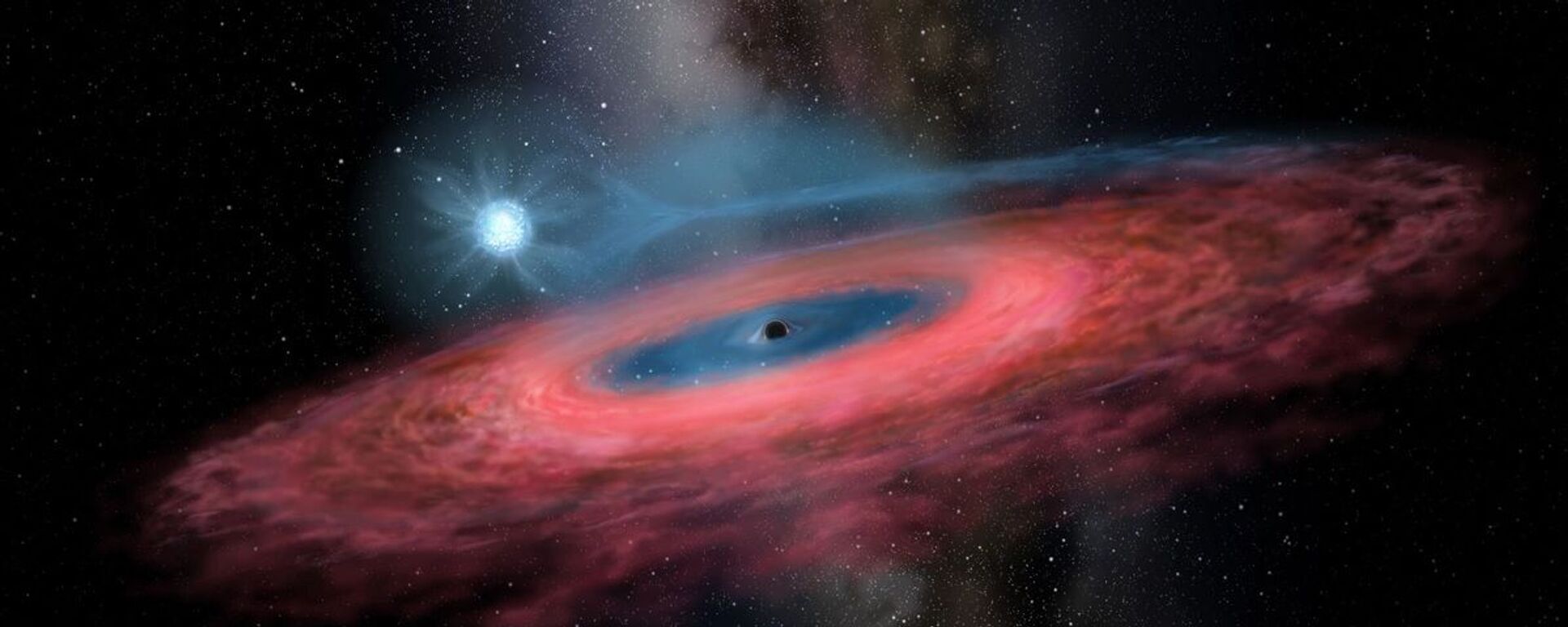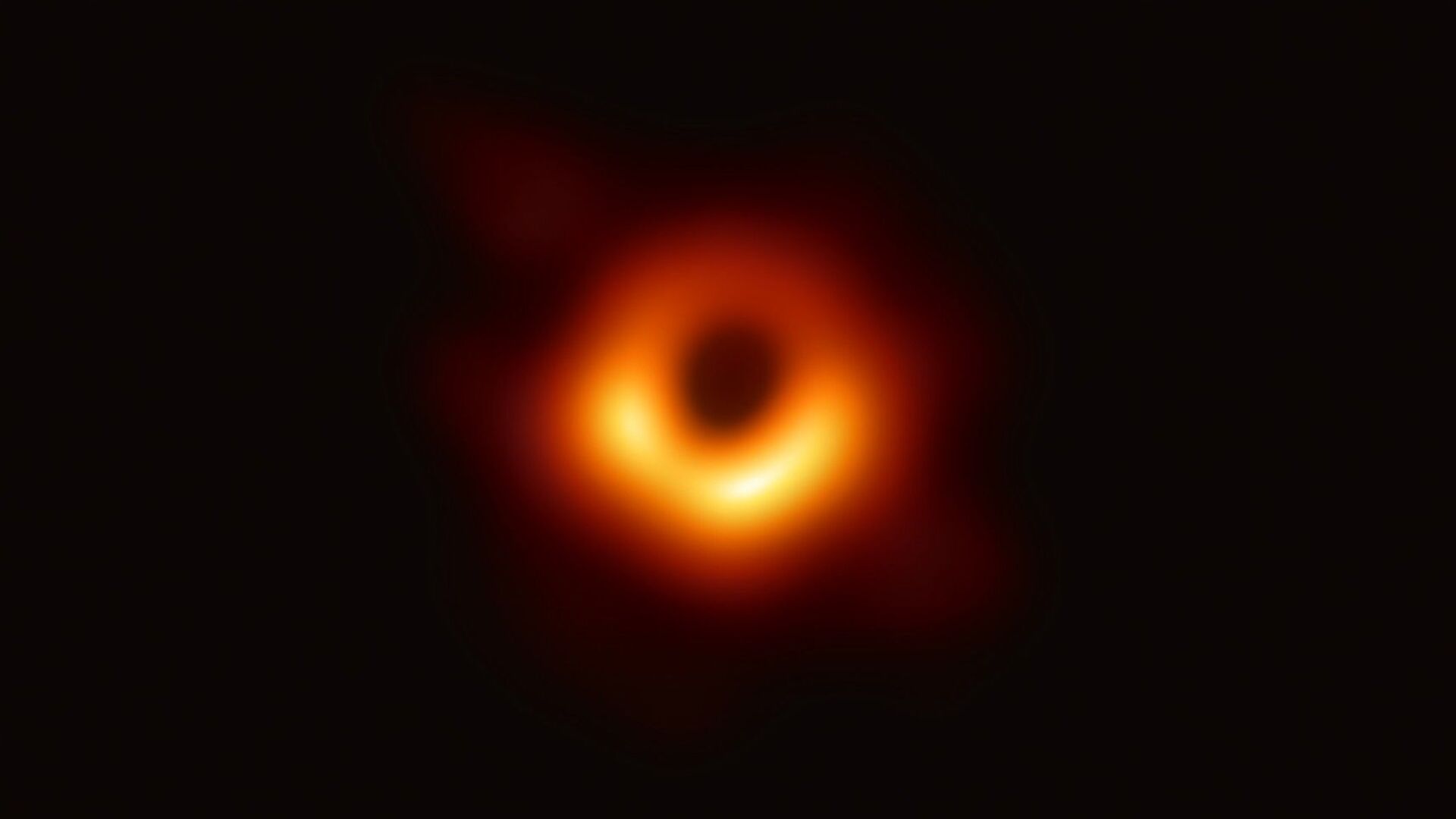https://sputnikglobe.com/20220205/scientists-discover-first-rogue-black-hole-in-our-galaxy-1092766439.html
Scientists Discover First Rogue Black Hole in Our Galaxy
Scientists Discover First Rogue Black Hole in Our Galaxy
Sputnik International
Scientists Discovered First Rogue Black Hole in Our Galaxy
2022-02-05T04:05+0000
2022-02-05T04:05+0000
2022-11-03T19:34+0000
science & tech
black hole
hubble space telescope
milky way
https://cdn1.img.sputnikglobe.com/img/07e5/03/18/1082442673_0:0:1717:966_1920x0_80_0_0_4f1b819ead124b93595d51a9b17300fe.jpg
Nevertheless, images from the Hubble Space Telescope helped astrophysicists discover a rogue black hole, the kind of supermassive hole that wanders in space far from the center of their galaxy, according to the study, published in the Astrophysical Journal. So far, it is the first unambiguous discovery of such a space object in the Milky Way.Researchers believe that a possible microlensing event that they observed in 2011 was caused by a free-floating black hole, wandering in interstellar space. At the time, astrophysicists noticed a star that appeared to be getting brighter for no apparent reason. Scientists began to analyze the Hubble data. For six years, they observed a change in light, hoping that it was due to the growth of the black hole.However, they noticed later that the star's light had changed. Scientists suggested that this was triggered by an invisible moving object applying force that attracted light passing by - an interstellar black hole. Astronomers continued to study the star and, as a result, one option remained - a wandering black hole is influencing the star's light.Overall, the evidence is strong enough to support the existence of a free-floating black hole. Scientists have even measured the hole, which weighs the equivalent of approximately seven Suns. They also determined that the object is moving at about 45 kilometers per hour.
https://sputnikglobe.com/20220126/new-type-of-massive-black-holes-searched-for-years-found-in-neighboring-galaxy-1092519851.html
milky way
Sputnik International
feedback@sputniknews.com
+74956456601
MIA „Rossiya Segodnya“
2022
News
en_EN
Sputnik International
feedback@sputniknews.com
+74956456601
MIA „Rossiya Segodnya“
Sputnik International
feedback@sputniknews.com
+74956456601
MIA „Rossiya Segodnya“
rogue black hole, milky way, hubble space telescope
rogue black hole, milky way, hubble space telescope
Scientists Discover First Rogue Black Hole in Our Galaxy
04:05 GMT 05.02.2022 (Updated: 19:34 GMT 03.11.2022) As black holes are difficult to detect, scientists used in their search the effects of lensing, when light from stars is bent by the attraction of a black hole. Given the long distances, the lensing effect is negligible, making it almost impossible to detect even with the best modern telescopes.
Nevertheless, images from the Hubble Space Telescope helped astrophysicists discover a rogue black hole, the kind of supermassive hole that wanders in space far from the center of their galaxy, according to the study,
published in the Astrophysical Journal. So far, it is the first unambiguous discovery of such a space object in the Milky Way.
Researchers believe that a possible microlensing event that they observed in 2011 was caused by a free-floating black hole, wandering in interstellar space. At the time, astrophysicists noticed a star that appeared to be getting brighter for no apparent reason. Scientists began to analyze the Hubble data. For six years, they observed a change in light, hoping that it was due to the growth of the black hole.

26 January 2022, 04:02 GMT
However, they noticed later that the star's light had changed. Scientists suggested that this was triggered by an invisible moving object applying force that attracted light passing by - an interstellar black hole. Astronomers continued to study the star and, as a result, one option remained - a wandering black hole is influencing the star's light.
Overall, the evidence is strong enough to support the existence of a free-floating black hole. Scientists have even measured the hole, which weighs the equivalent of approximately seven Suns. They also determined that the object is moving at about 45 kilometers per hour.


